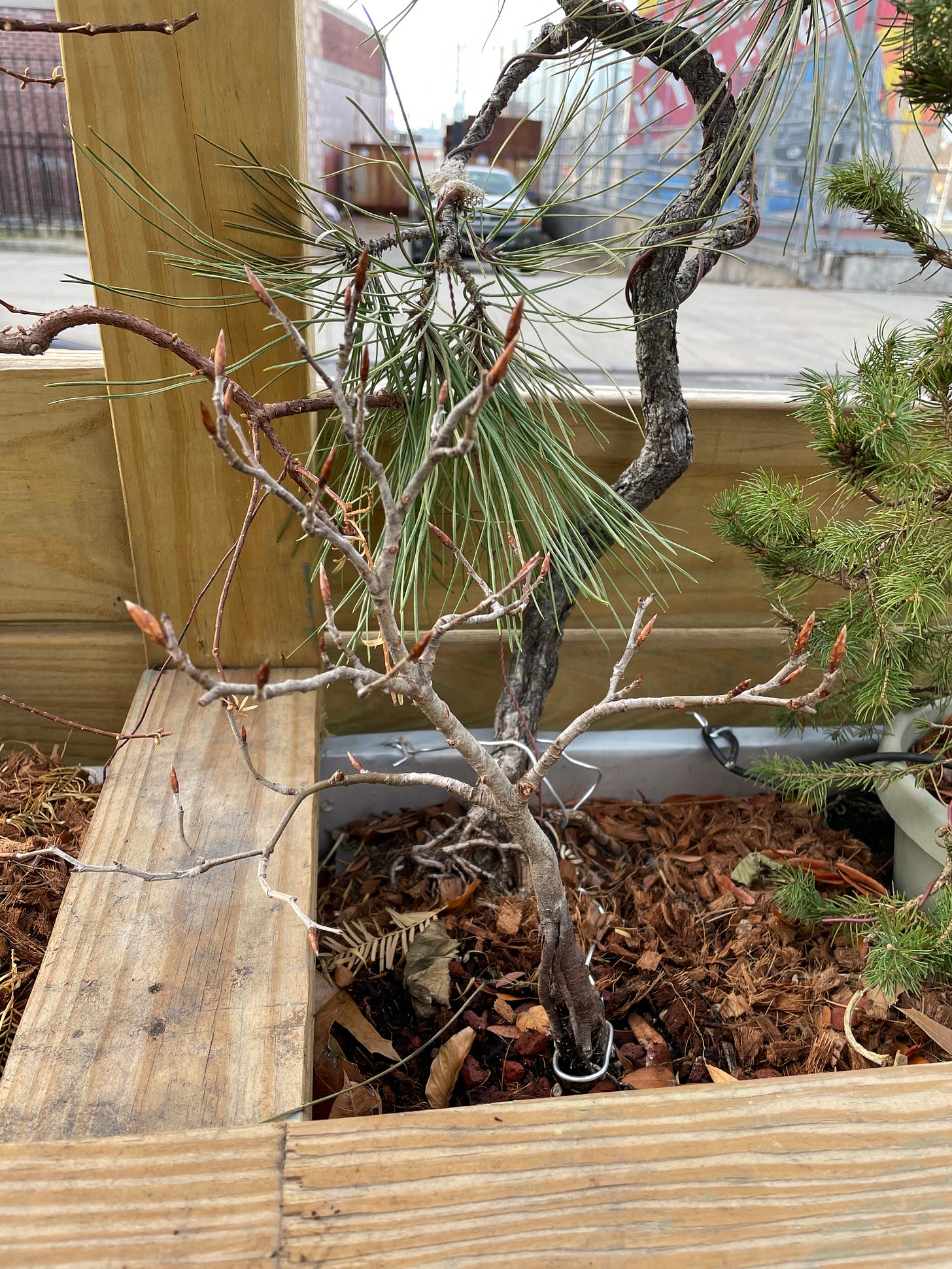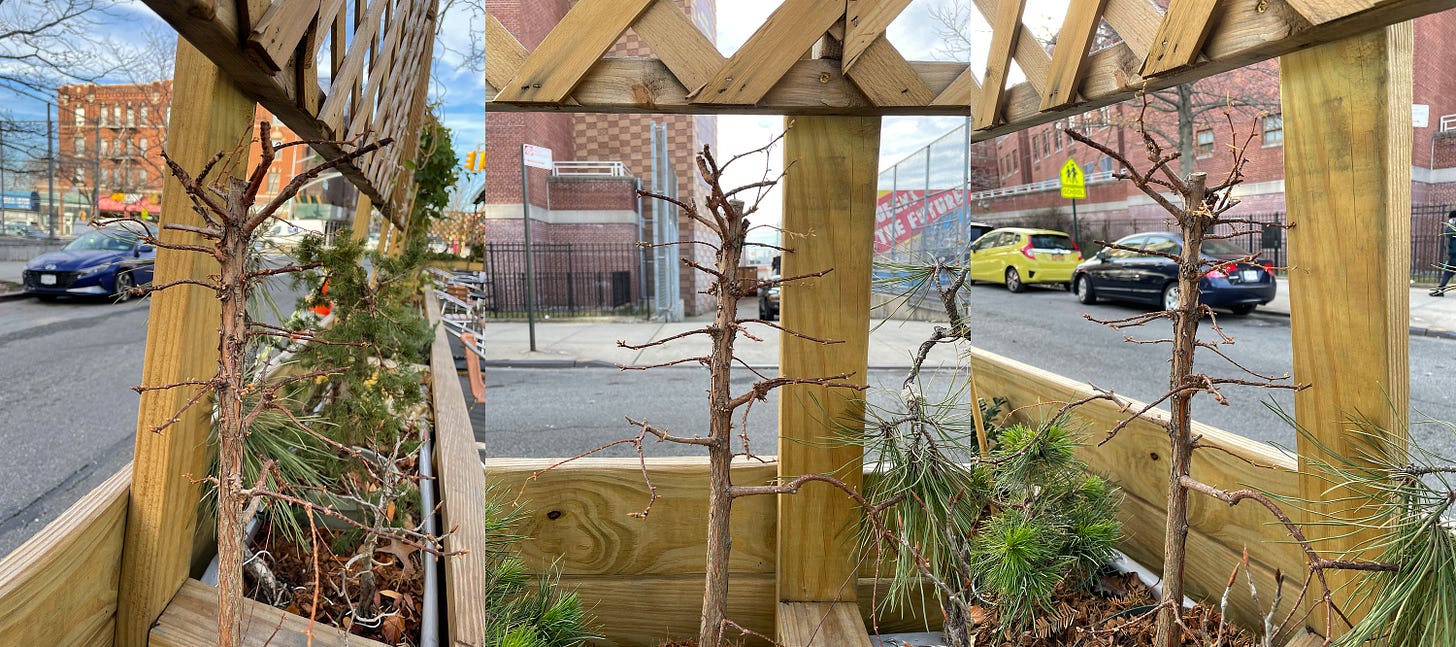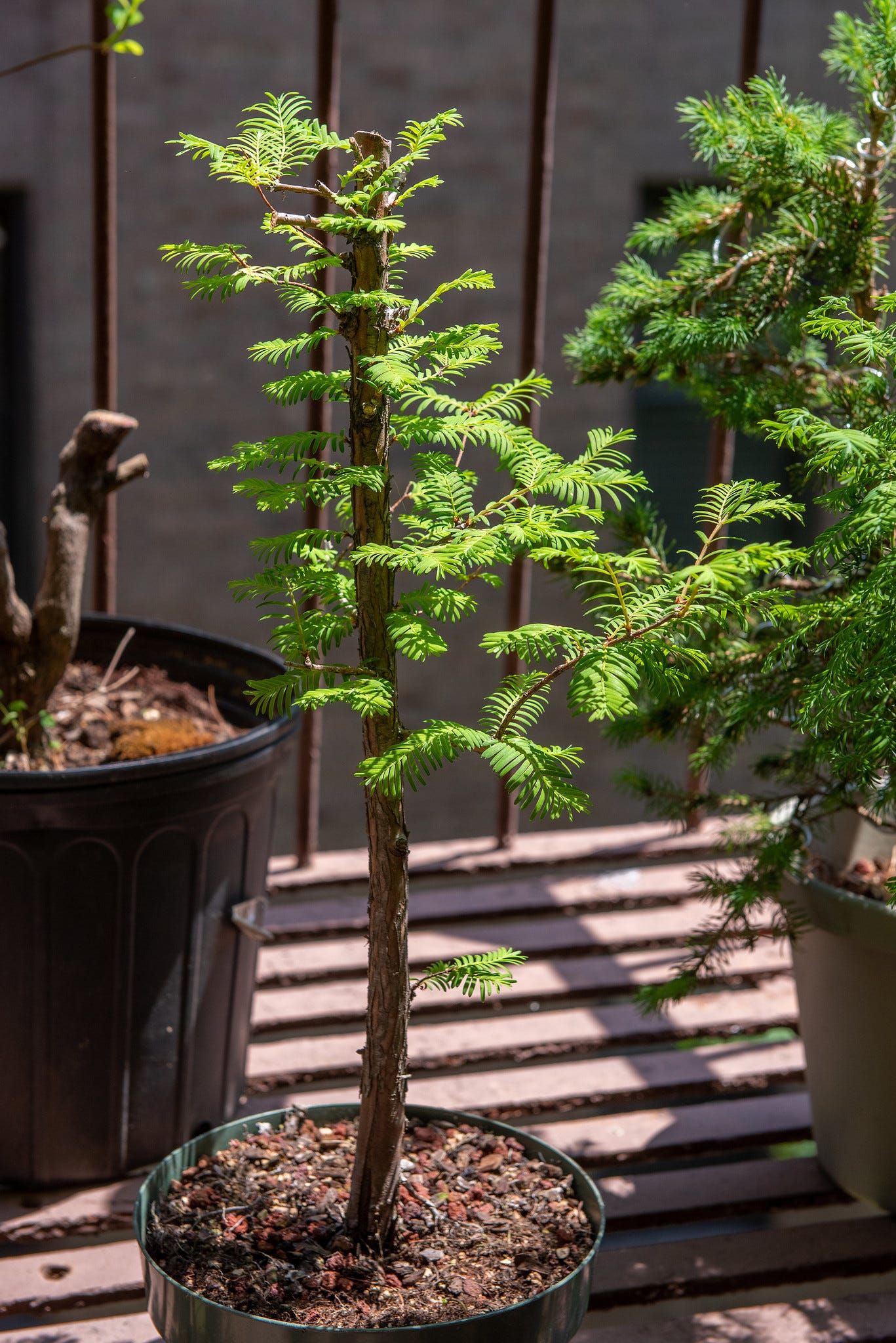Winter is here, and with the exception of a few hangers-on, most of the leaves have fallen from my deciduous trees. There isn’t much to do with temperate bonsai during the dormant season, but the trees’ skeletal structures offer a chance to get a clearer look at their branches: how they really look without any leaves cluttering your view.
I’m pretty pleased with the look of this dawn redwood pictured above. One day I think it’ll make a convincing miniature of its towering California cousins, with that low arcing branch lending definition to the design. For now I’m focused on developing better taper in the trunk and defining the main branches. Without its leaves, I can see the tree is on its way.
Here’s the same tree a few months ago after its end-of-summer haircut. Healthy, but a big bushy mess! By comparison, here’s what it looked like at the start of the growing season when I first bought it on eBay.
“Leave room for the birds to fly through the branches of your bonsai,” the artist John Naka used to say. This tree has a long way to go before it hits that aesthetic standard. However the growth is encouraging. Look at that burgeoning nebari and the split bark!
This year the tree’s initial branches were set. Next year those branches will bifurcate from where they were trimmed. I’ll let them grow out to thicken, then trim them back to tiny forks. The year after, those forks will bifurcate again. Grow and trim back, grow and trim back.
All this ramification will make an even bushier, messier tree. Any birds that attempt to fly through will probably get stuck. But I have to balance the tree’s health with the spare aesthetics that characterize bonsai designs. About half of the redwood’s current branches will eventually be pruned to define its silhouette. Trim too much now, though, and the tree will literally starve. Its growth will be weak and gangly and it’ll become susceptible to disease.

I love the look of this beech without its leaves. You can see the fat auburn buds and silvery bark in all their glory. The trunk has this graceful feline demeanor I’m trying to replicate in the branches. Though without the leaves, the problems with this tree are also more evident. The lower two pairs of “handlebar” branches are starting to form bulges at the trunk that threaten to disrupt its taper.
When the tree was in leaf, I thought I could get away with them by angling the bottom left and top right branches away from the tree’s front. Now I see that maneuver didn’t really work. So I have some tough decisions to make. How can I prune the offending branches while keeping the tree’s main silhouette? I suspect I’ll spend a lot of time this winter staring at the beech in search of a solution.
In an essay about bonsai and mental health that I wrote for Vox, I tried to share a lesson my trees have taught me time and again this year. Progress isn’t linear, and much of what we think is important—what may be important at a given time—will disappear from our lives a few years down the road. The branches that remain will only be possible because of the work done by other branches that are eventually pruned away.
The pruning is just as vital as the growth. You have to make choices. An unpruned bonsai is just a bush in a pot.
Tree reading
A neat example of how trees actively respond to changes in their environment, in this case by changing their leaf shape! [Twitter]
The vibes are excellent over at r/matureplants. [Reddit]





